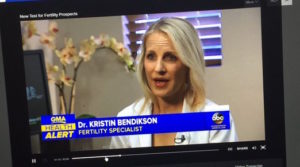The beginning of the USC Center for Pregnancy Loss

It all started with a desire to help women who have had miscarriages.
In my practice I see a lot of both fertile and infertile women who have suffered from a miscarriage or multiple miscarriages. In my consultations with these women I find that they focus on three things they want me to answer for them.
- Why did this happen
- Can we treat it
- What is the chance that this will happen again.
This is too much to cover in a short blog so today I am just going discuss miscarriages as a result of chromosomal abnormalities, which is the most common cause of miscarriage.
The majority of miscarriages are caused by non-inherited genetic abnormalities. People refer to these types of abnormalities as chromosomal abnormalities and they account for two thirds of miscarriages. Chromosomal abnormalities are most often caused by random errors in the development of a woman’s eggs (not the sperm) that eventually lead to an abnormal amount of chromosomes in the embryo. The majority of chromosomal abnormalities happen as a function of egg quality that decline with age, so they can happen in women of all ages but will happen more often as a woman gets older. In fact, age is the most important risk factor for miscarriage in healthy women.
Unlike sperm that are constantly created in men, all the eggs a woman will ever have are present in her body from before the time she was born. Therefore, as women ages her eggs age, just like any other cell in her body. As the eggs age, they are more likely to have a mechanical failure as they develop which leads to the egg contributing too much or too little genetic material to the embryo, meaning duplicates or an incomplete set of chromosomes. Therefore, that embryo will end up having an abnormal amount of genetic material, which we call a chromosomal abnormality. The chance of miscarriage in any woman is greatly impacted by her age, the older a woman gets the more likely it is for her to miscarry. The risk of a single miscarriage is only 15% in a 35 year old, however by the age of 40 it increases to at least 30%, and by 45 the chance of miscarriage is >60%.
IVF can also be used to treat miscarriages caused by chromosomal abnormalities. By screening the embryos to make sure they have the correct number of chromosomes, in a process called Preimplanation Genetic Screening, we can avoid transferring back chromosomally abnormal embryos and therefore greatly diminish the chance of miscarriage.
In extreme cases when the egg quality of a woman is very poor, an egg donor can be used to help the couple have a baby. For most women who have suffered a miscarriage, it doesn’t come to that.
It is important for women, even with one miscarriage, to meet with their obstetrician or a fertility specialist, so that they can review the woman’s medical history and lifestyle and make sure there isn’t something obvious that needs to be addressed at that time that could impact the next pregnancy.
The best news is that even without treatment the chance of having a healthy baby in the next pregnancy is very high. So if you have a miscarriage. Don’t give up, don’t lose hope.



